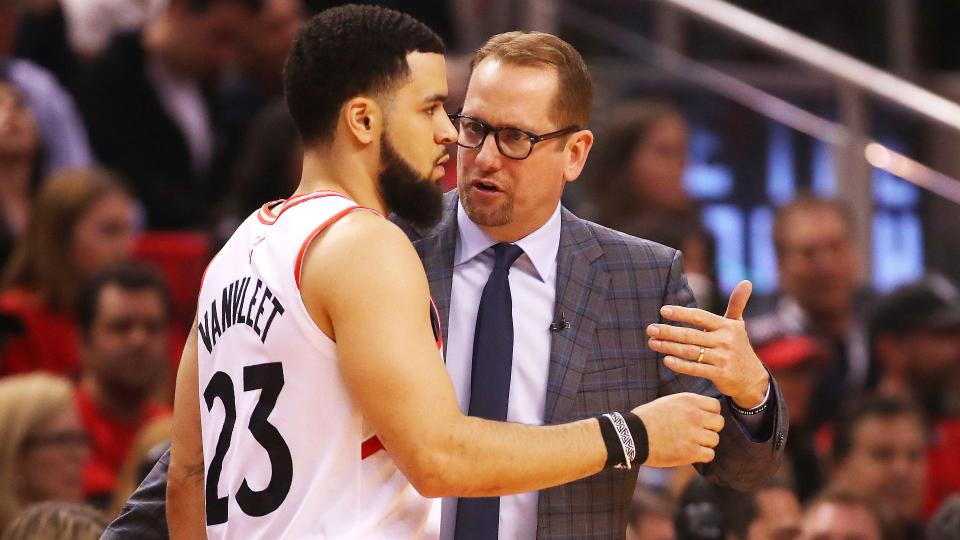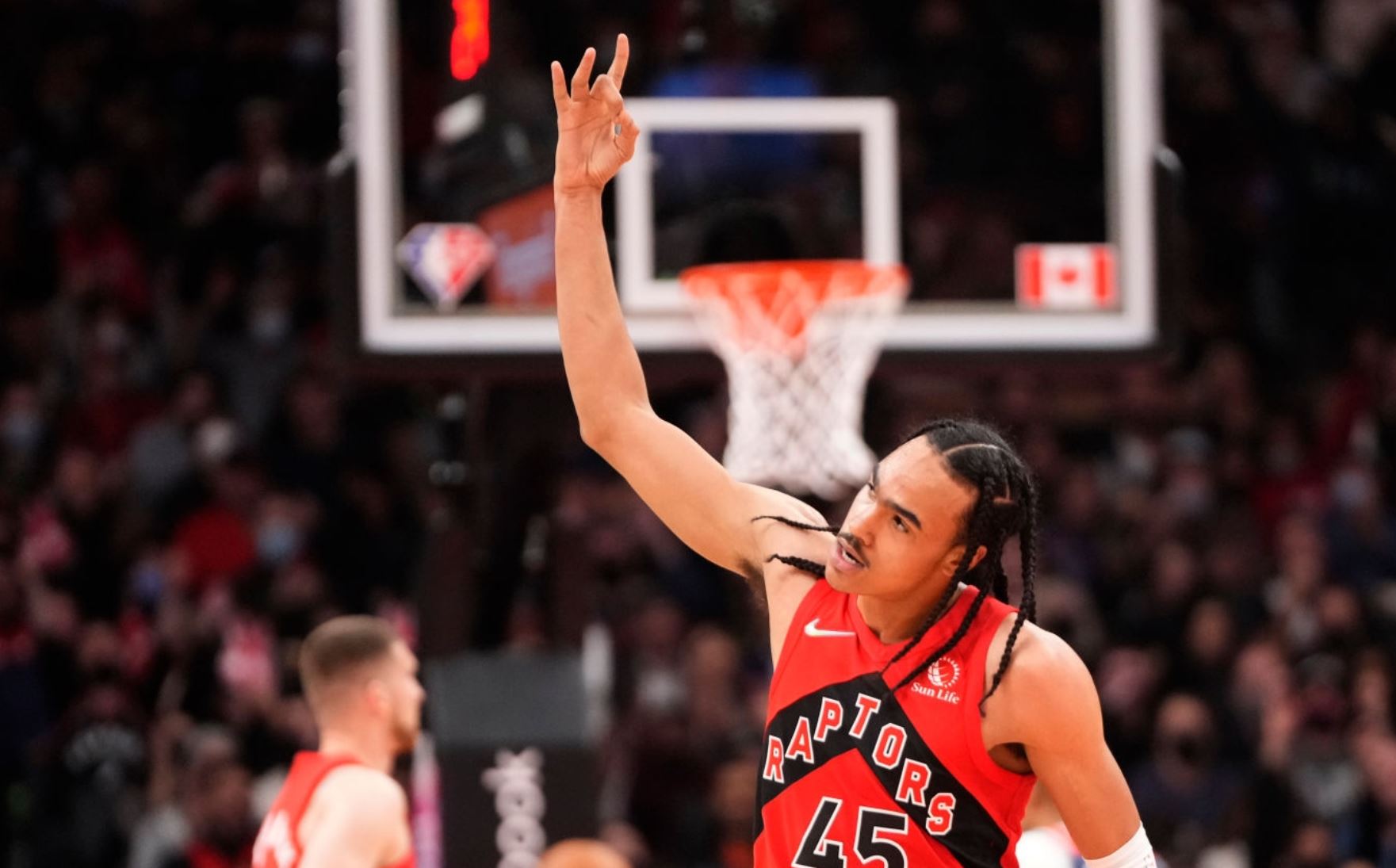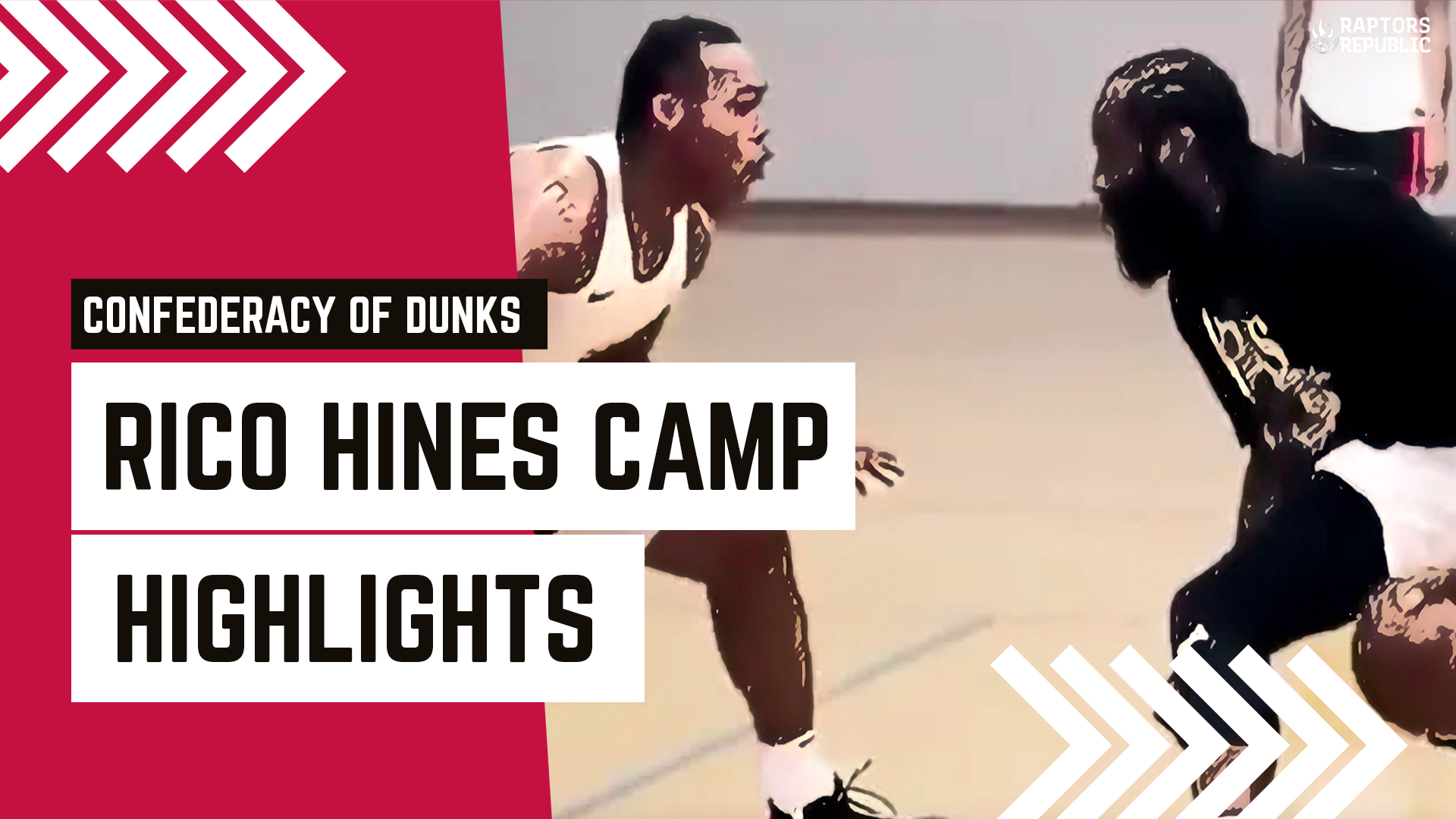A structure is only as strong as its components, a building as strong as its beams, and the Toronto Raptors last season only went as far as their individual lineups. Last year, Toronto had seven groups record more than 100 minutes. And those lineups accurately represented much of the team’s successes and failures last season.
The bench groups — with Chris Boucher and/or Precious Achiuwa, especially — were brilliant. The Raptors had three lineups with at least 100 minutes that included one or both of those two bench bigs, and they were Toronto’s best high-minute lineups of the season. At the same time, Toronto’s two highest-minute groups of the year were mediocre. The starters, who played 700 minutes total — the 15th-most in the league — were only +1.8 per 100 possessions, below average for a starting group. And the starters with Khem Birch in place of OG Anunoby were even worse, losing its minutes by -2.7 points per 100 possessions despite playing the second-most minutes on the team.
So the Raptors weren’t fully optimized.
With the starters worse than they should have been, the collection of the team’s best talent was especially not wonderful. Unfortunately for the Raptors, it’s hard to see the starting lineup changing. Fred VanVleet, Pascal Siakam, and OG Anunoby are locks as the team’s incumbent big three. Scottie Barnes is the team’s reigning Rookie of the Year; he’s not going to the bench anytime before he turns 37. Gary Trent jr. might be the most realistic option to move to the bench, and he has the shooting chops that Toronto’s bench desperately needs to improve. But he’s in a player-option year, and he’s done nothing but improve since joining the Raptors. He was statistically one of Toronto’s three high-volume-high-efficiency shooters, the most efficient isolation player on the team, and one of the steals leaders in the entire league. To bench him in the upcoming season would be a politically risky move, both on the court and inside of the locker room. Of course, the Raptors have built up the cache to survive a move like that — Nick Nurse isn’t losing the locker room anytime soon, not with VanVleet as the captain, and Masai Ujiri’s stock is basically unbreakable. So it’s possible that Trent starts games on the bench, but there are plenty of downsides. My bet is Trent stays with the starting group for on-court reasons alone, let alone all the extraneous components. So, the starters:
VanVleet-Trent-Anunoby-Siakam-Barnes (+2.8 per 100 possessions in 700 minutes in 2021-22)
Which means the Raptors will likely still start games from behind or on an even footing. There are too many mouths to feed, with both Trent and Anunoby — ostensibly the floor spacers — desirous of creation touches, whether in the pick and roll, isolation, or the post. There still won’t be enough rebounding amongst the starting group, and the half-court offense will be a struggle without enough player or ball movement, shooting, or rim pressure. (I’m not certain starting Achiuwa would address all of those problems — despite his huge improvement as a shooter, he’s still not as dangerous as Trent, and he also needs more touches than simple standstill jumpers.) But the starters could still be better than they were last season. Barnes’ jumper way well be improved, and Toronto never enjoyed a healthy Siakam and VanVleet alongside one another. But the Raptors won’t be at their winningest with these starters on the floor.
Yet the bench groups will probably be better than they were last year. Achiuwa and Boucher will continue dominating all available minutes, and while both averaged between 21-23 minutes per game in the regular season, it’s very possible they will see a few extra this upcoming year. Achiuwa’s playing time went way up in the playoffs, which should be a fair indication of this upcoming year. He ought to eat into Birch’s minutes — expect Toronto’s second-most used lineup to include Achiuwa rather than Birch. That will help the offense. Minutes with starters alongside one or both of Achiuw and Boucher will likely be Toronto’s winningest groups. So, some guesses at the a few of the next most-used groups that weaponize Achiuwa and Boucher:
VanVleet-Trent-Barnes-Siakam-Achiuwa (+14.5 per 100 possessions in 297 minutes in 2021-22)
Trent-Barnes-Siakam-Boucher-Achiuwa (+18.4 per 100 possessions in 103 minutes in 2021-22)
VanVleet-Trent-Anunoby-Barnes-Achiuwa (+7.9 per 100 possessions in 307 minutes in 2021-22)
VanVleet-Trent-Anunoby-Siakam-Boucher (+22.3 per 100 possessions in 206 minutes in 2021-22)
Thad Young and Otto Porter jr. will play huge roles on the team as well. After Young joined the Raptors, he averaged almost 20 minutes a game — more than Birch. And his groups were fantastic. He shot fantastically from the corners, was a great secondary creator, and was one of Toronto’s best drivers. Alongside Boucher especially, the Raptors found gold, and with enough creation across the positional spectrum Young’s lineups were one of the few that could offer VanVleet some rest. Porter will also slot in as a low-maintenance shooter and cutter. He and Young could have exceptional chemistry together keeping the chains moving, as long as they’re alongside initiators so that they aren’t asked to overextend. So, some options for next few groups that can buy more starters rest:
Siakam-Trent-Young-Boucher-Achiuwa (+27.8 per 100 possessions in 54 minutes in 2021-22)
Barnes-Trent-Porter-Anunoby-Boucher (N/A)
VanVleet-Trent-Porter-Anunoby-Boucher (N/A)
That’s nine deep. Alongside the starters, Toronto’s most-used bench players are almost sure to be Achiuwa, Boucher, Young, and Porter. Achiuwa will see the most time alongside the starters (he led the bench in minutes per game last year), and Boucher, Young, and Porter will complement each other as low-usage cutters. But at times, the Raptors will likely play one or two starters alongside the deep bench. Last year, they had the 29th-highest frequency in the league for one-starter groups. If the intention is to lower the minutes total for VanVleet and Siakam (who tied to lead the league in minutes per game), that will have to change. They won’t go back to the Lowry-plus-bench group running the league, but there will be some opportunities for players beyond the top nine. Some options:
VanVleet-Banton-Barnes-Boucher-Achiuwa (+64.0 per 100 possessions in 19 minutes in 2021-22)
Siakam-Porter-Young-Boucher-Koloko (N/A)
Banton-Barnes-Young-Boucher-Birch (+98.1 per 100 possessions in 14 minutes in 2021-22)
Trent-Champagnie-Anunoby-Young-Boucher (N/A)
There are some obvious question marks in groups that didn’t play together last year — including newcomer Porter as well as Champagnie and Young together — but there are plenty of reasons to expect success. Porter had the second-highest on/offs on the Warriors last year (behind only Steph Curry), and Champagnie had the highest on the Raptors. There will be some groups that don’t win their minutes because there always are. But the Raptors should have more groups that win their minutes than they did last year. Young and Achiuwa should have larger roles, and Porter will add a lot. Bench players like Birch, Svi Mykhailiuk, and Yuta Watanabe (only Birch, I imagine, will be on the roster this upcoming year) may well lose some playing time, and the Raptors will replace them with players with added dimensions to their games.
Of course, the starting group will need to win more of its minutes for the Raptors to improve in larger ways than around the edges. A building can strengthen its beams all it wants, but the foundation still matters the most. That could happen if, say, Barnes and Siakam become knockdown shooters. Or if there are some personnel changes. But the team should still have plenty of opportunity for improvement.
Ultimately, that all depends on the players. Siakam and VanVleet will need to maintain All-Star level play. Anunoby and Trent will need to hit open shots and force turnovers. Achiuwa will need to prove his improvements wasn’t a fluke, and Barnes should see usage tilt more and more in his direction. But the team should have more structural advantages this season than last, giving its players better opportunities to maintain their play and even improve. Last year, players sometimes succeeded despite the units on the floor. This year, the hope has to be that those lineups will become empowering factors.




